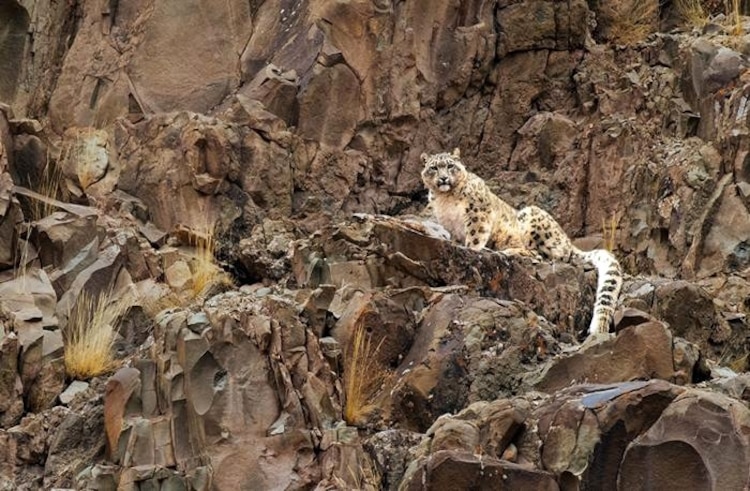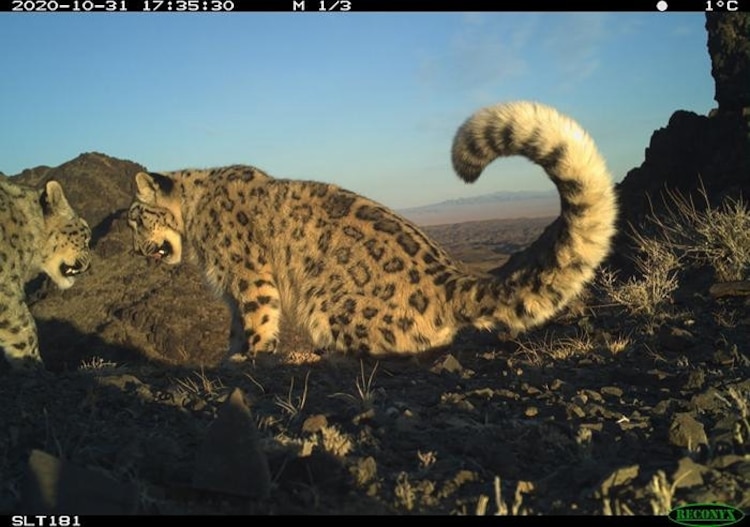 |
| Snow leopard in Ladakh |
High in the windswept peaks of Central and South Asia, among cliffs dusted with snow and silence, lives one of nature’s most enigmatic hunters — the snow leopard. Known as the “ghost of the mountains,” it rules this frozen world with quiet grace, keeping the fragile balance of its high-altitude ecosystem in check. Yet, even this master of the mountains is not beyond danger. For decades, the snow leopard has endured the toll of vanishing habitats, the shadow of poachers, and conflict with humans. But now, scientists have uncovered a new and more subtle threat — one hidden within the animal’s very genes.
An international team of researchers, led by Stanford University biologist Dmitri Petrov, spent years gathering blood and tissue samples from more than forty snow leopards — a genetic treasure trove collected over two decades. When they sequenced the genomes, the results, published in the Proceedings of the National Academy of Sciences, revealed a troubling truth: snow leopards have unusually low genetic diversity. In a rapidly changing world, that lack of variation could leave them vulnerable. Without enough genetic flexibility, adaptation becomes a struggle — especially as rising temperatures reshape the mountain ranges they call home. Lead author Katie Solari notes that even compared to cheetahs, long known for their genetic uniformity, snow leopards show less diversity still. Yet amid the concern, the scientists found a spark of hope. The data revealed that snow leopards carry fewer harmful genetic mutations — evidence that over generations, natural selection may have quietly purified their lineage, helping them survive despite small, isolated populations.
Now, the research continues. More samples, more stories hidden in the DNA of these elusive cats, waiting to be uncovered. Each discovery brings us closer to understanding how the snow leopard — silent, spectral, and resilient — continues its fight for survival among the world’s highest peaks.
 |
| Snow leopards in south Gobi, Mongolia |
The survival of the snow leopard is hanging by a thread, and recent research shows why this majestic predator deserves urgent attention. With a global population estimated between 4,000 and 6,500 individuals, these elusive cats face a silent but serious threat: low genetic diversity. Limited variation in their genes can hinder reproduction and leave them more vulnerable to disease, putting the species at risk in ways that are not immediately visible.
The study does offer a glimmer of hope, showing that snow leopards have, over generations, managed to eliminate harmful mutations from their population. Yet this natural resilience may not be enough in the face of rapid environmental change. That is why understanding their genetic makeup is crucial — it could hold the key to developing strategies that ensure these high-altitude hunters endure for generations to come.
Climate change adds another layer of urgency. Rising temperatures and shifting ecosystems threaten to alter the fragile mountain habitats snow leopards depend on. Protecting these environments is not just about preserving scenery; it is about safeguarding the very survival of a species.
And the challenge does not end with snow leopards. Cheetahs, too, face a similar genetic bottleneck. To secure a future for both of these iconic big cats, the world must take decisive, coordinated action — combining research, conservation, and habitat protection — before it is too late.
No comments:
Post a Comment